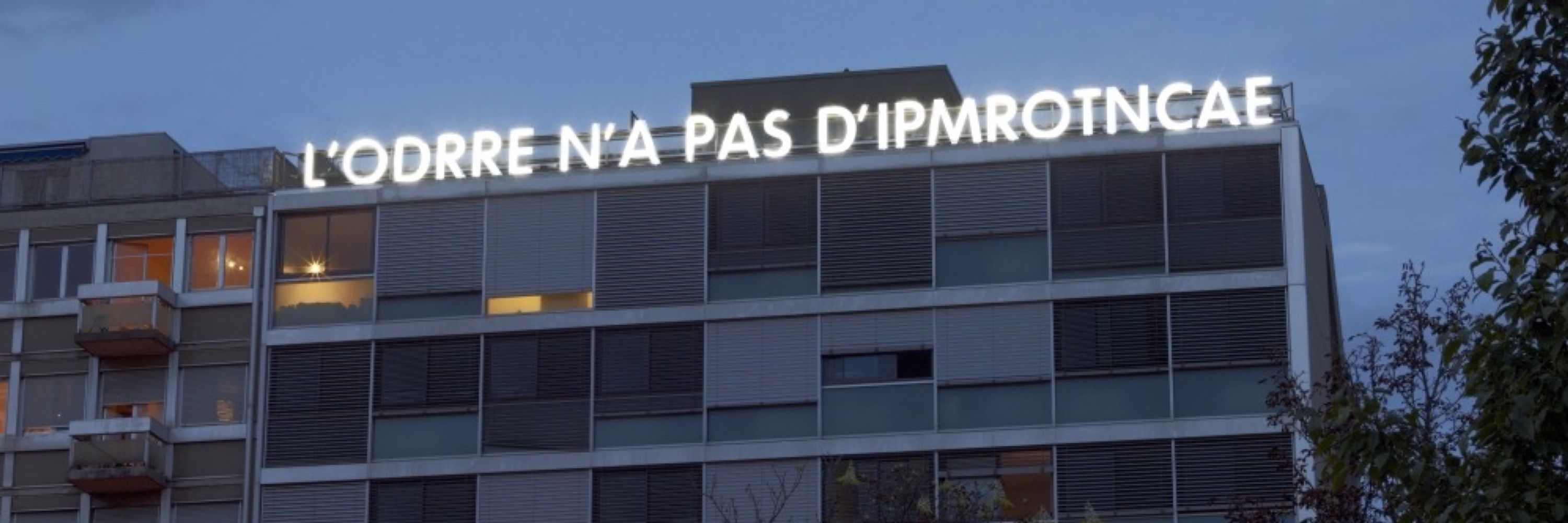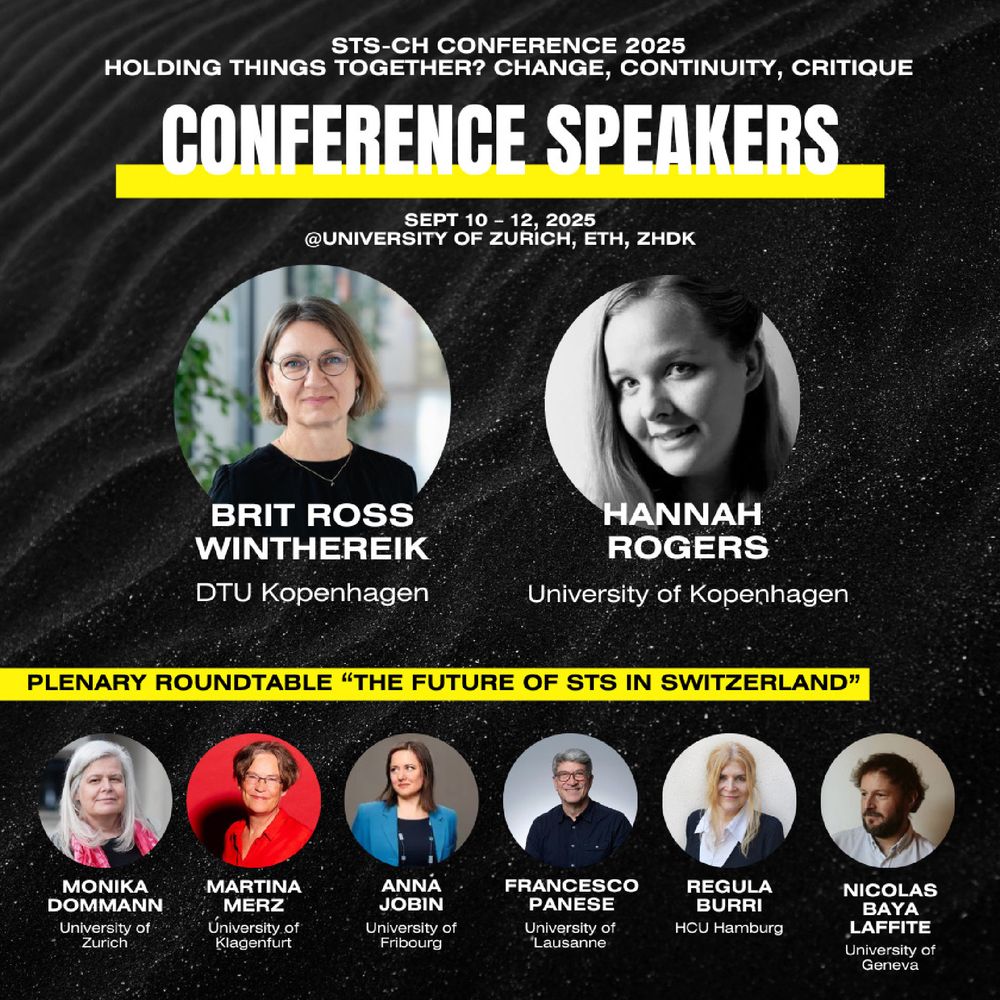Radio and Newspapers: What Intersections for Media History?
Radio and Newspapers: What Intersections for Media History?
1
04. September 2025
International Conference
University of Lausanne
June 30 - July 1 2026
Conference website: https://impresso.github.io/radio-and-newspapers-conference/
Call for papers
Building on our ongoing reflections on a historical “transmedia” approach, this international conference—organized by the Impresso project and the History Department of the University of Lausanne—aims to move beyond the traditional understanding of press-radio relations. As the two main information media in the 20th century, their relationship has often been reduced in literature to one of simple institutional competition. This conference seeks to investigate the complexity of their relations. It aims to throw light on mutual influences over content and format, staff and practices circulation between the two media, as well as cross-representations and cross-uses. A central objective is to explore the novel research perspectives offered by the development of digital tools in the context of the digitization of press and radio archives.
Although recent years have seen proposals for more integrated approaches (transmedia, cross-media, media convergence, etc.), mass media historiography has long been constructed around compartmentalized views of each media. This is particularly true for press studies, where radio is rarely mentioned or only very sporadically (Delporte et al., 2016; Hampton, 2004; Koss, 1990). On the other hand, radio has been more often studied in relation to other media. This has been the case with television (TV), most notably in research on public broadcasting (Jeanneney, 1999; Drack, 2000; Mäusli and Steigmeier, 2006; Mäusli, Steigmeier, and Vallotton, 2011), but also with the press, due to its far-reaching influence during the early days of radio broadcasting (Arceneaux, 2019). Instances of studies on the relations of the press and radio primarily pertained to their rivalry. In the 1920s, the emergence of radio, capable of reaching audiences more rapidly, sparked concern among newspaper publishers. They attempted to curb its development, notably by claiming a monopoly on news gathering and imposing advertising restrictions to protect their commercial position. Some alternatively sought to oversee its development or even became station owners themselves (Stamm, 2011). This rivalry led to numerous institutional negotiations over time, such as during the liberalization of audiovisual broadcasting (Sandoz, 2025, 153-188). It persists to this day, most notably in recent debates around digital content production by public radio and TV broadcasting companies.
These central and significant tensions have dominated historiography, overshadowing those other forms of interaction between the press and radio which remain largely underexplored. The press and radio differ profoundly in terms of medium (written vs. oral), technological constraints, modes and means of production/distribution, and archiving conditions—which pose specific challenges for preservation, access, and joint analysis. Nonetheless, these two media have always evolved within what Siân Nicholas calls a "culture of intermediality" (2012). This culture manifests through stylistic convergence, content interdependence (notably mutual borrowing), as well as staff circulation. Such a perspective invites us to envision "an integrated history of mass media," focusing on interactions and co-evolutions between media throughout their development (Nicholas, 2012, 383).
The conference wishes to explore this "interlinked media history" (Nicholas, 2012, 383), the roots of which even predate the massification of radio (Arceneaux, 2014). We encourage research on complex interactions and interdependencies between the press and radio, so as to move past analyses of sole competition dynamics. The goal is to shed light on transmedia dynamics, mobilizing tools and approaches (e.g., digital methods) that can, more broadly, enrich theoretical and methodological reflections on media history. Our aim is to contribute to a de-compartmentalized and “entangled” history of the press and radio, understanding their development within a broader social, political, and cultural framework (Cronqvist and Hilgert, 2017).
To this end, we welcome contributions centered around three main research areas:
1. Content and Formats: Mutual Influences and Remediation Processes
This focus aims to identify and analyze the various ways in which the press and radio mutually influenced each other throughout the 20th century, both in terms of published/broadcast content and adopted formats. Moving beyond readings based solely on rivalry or competition, it seeks to explore interdependence, imitation, reappropriation, and reciprocal transformation. From the early days of radio broadcasting, publishers played an active role in creating and sponsoring programmes. News agencies were often the primary (or the sole) source of information for radio content. Besides, the radio drew heavily on newspapers to structure programmes and formats, such as with news bulletins or radio "magazines." Nevertheless, influence was reciprocal. The press took on radio vocabulary and style to invigorate its own content, by even integrating discursive features typical of radio broadcasts. More broadly, aware that its readers were increasingly tuning into the radio for news, the press gradually adapted its content, redefining its role by focusing more on analysis and opinion. The very form of newspaper articles evolved: shorter headlines, lighter layouts, condensed paragraphs, all of which are changes attributed to the influence of radio's concise formats, particularly news bulletins.
These mutual influences also manifest in the parallel evolution of specific formats. For instance, the interview genre, born in the press as an attempt to capture oral testimony, was transposed to radio with its own codes (Willem, 2020). Similarly, satire developed in both media, moving from printed caricatures to radio pastiches, just as advertising found specific expressions for each medium (Morillas, 2005). In some cases, formats moved to the point of complete media shifts. For instance, certain radio programmes gave rise to press titles (Kaenel, 2021).
The circulation of journalistic models and editorial practices illustrates the deep connections between the two media. Our first focus therefore aims to understand the mechanisms by which narratives are rephrased, reformatted, adapted, or reworked from one medium to another. The process, defined by Bolter and Grusin (2000) as "remediation," shows how each medium exists within a network of imitations, diversions, and reinterpretations of other media. Although this concept was first used to describe phenomena peculiar to the digital era, it can apply to the historical relations of press and radio as well. New media do not supplant existing media; instead, they reconfigure and repurpose them, and integrate them into new expressive frameworks.
Contributions for this area might address the following questions:
*
Which actors and which economic, political, and/or technical dynamics boosted or hindered such hybridization processes?
*
How did editorial logics and material constraints influence the reconfiguration of formats?
*
What transfers of style, vocabulary, genres, or rhythms can be observed between these two media?
*
How does the concept of remediation renew the analysis of relations between media?
2. Actors and Practices: Circulations and Convergences
The second research area aims to examine movement between the press and radio, whether in terms of individual career paths or journalistic practices. It emphasizes circulation and convergence which, far from being marginal phenomena, profoundly structured media ecosystems long before the digital era.
Individual career paths highlight the strong permeability of the two media (Valsangiacomo, 2015). Many professionals–columnists, editorialists, reporters, or sports, film and culture journalists–moved between media or worked simultaneously for both. Some radio directors or programme managers first came through the press industry. This mobility partook of the emergence of a "professional media community" (Nicholas, 2012, 388), characterised by intermedial staff circulation and the formation of social circles that reinforced interdependencies.
At the same time, professional practices were also subject to cross-appropriation. Media convergence, whether economic or technological (Sparviero, Peil, and Balbi, 2017), fostered the development of transferable know-how. These dynamics can be tracked in both past and contemporary journalistic practices. Early 20th-century experiments like the Chicago Daily News's Radio Photologues testify to early forms of multimedia journalism, combining text, sound, and image (Good, 2017). This leads to considering convergence as a recurrent historical dynamic rather than a linear process emerging alongside digital technology. The interdependence of media is therefore not new in itself, but has accelerated and reshaped in recent years due to digital reformatting.
Proposals for this second area might address the following questions:
*
How did the "journalist” identity evolve with the emergence of a new media, i.e. radio? How did the professional media community reorganize to adapt to, and integrate new occupations?
*
What is the profile of individuals who embodied the convergence of press and radio? Did they follow standard or outstanding career paths?
*
Moving past visible evidence found in media content, what are the underlying institutional and economic dynamics that drive press-radio convergence?
*
How did digital convergence redefine the boundaries between radio and press, both in terms of editorial practices and production process?
3. Reciprocal Discourse and Representations: Towards a Hybridization of Uses
The third research focus pertains to the reciprocal representations that radio and the press produced of one another. It also broaches the cross-uses made by audiences. The goal is to better understand, on the one hand, how the press and radio—far from evolving in silos—defined themselves in relation to each other, and influenced one another symbolically. On the other hand, it seeks to examine the various ways in which their audiences made complementary uses of them.
Discourses produced by media about their competitors and partners offer a privileged terrain for observing intermedial dynamics. The press, for example, reported on radio early on through critiques, columns, or special pages. It thereby contributed to shaping the public image of radio broadcasting, while consolidating its own authority and responding to growing public interest in "entertainment" pages (MacLennan, 2012). Conversely, some radio programmes staged, cited, or analysed the press, further contributing to blurring boundaries between the two media. Cross-representations such as these testify to both a desire for competitive positioning and a logic of complementarity. Perceptions circulating between the two media offer keys to understanding how each of them legitimized their respective roles in the public sphere. Beyond discourses, the material forms of hybridization will be central to this research area. Radio magazines, radio press reviews, cross-promotional advertisements, or specialized outlets like The Listener,Radio Times or Hör Zu illustrate how one medium can be a platform to promote or narrativize the other. Commercial and institutional collaboration between press publishers and radio broadcasters, esp. for publishing programme schedules or supplements, played a formative role in structuring a hybrid media ecosystem.
The porosity between these two media spheres hints at the existence of a common culture. It also points out mutual adaptation to the norms and expectations of different audiences. This focus thereby seeks to examine convergent media usage practices within households. Cross-media consumption reveals that audiences navigate through a transmedia environment, investing different media in a complementary fashion, through simultaneous or sequential "convergent media use" (Müller and Röser, 2017).
Contributions for this area might address the following questions:
*
How was the emergence of radio reported on and perceived by the press?
*
How did these two media popularize, promote, or criticize the other's content?
*
How did the paper medium (newspapers) serve the objectives and interests of radio, and vice versa, how could the audio medium (radio) be used to serve the press?
*
How did audiences engage with press and radio content in hybrid media environments?
*
To what extent and in what volume do we observe convergent media use within households? How is this trend intensifying in the digital age?
By mobilizing a cross-cutting approach to the history of the press and radio, the contributions gathered in this conference will provide new insights into the history of both media. They will also explore novel perspectives offered by the massive digitization of archives and the development of computational methods for writing a transmedia history. They will further shed light upon the culture of intermediality in which these media have emerged and developed, without overlooking the differences, divergences and tensions which have occurred and persisted, notably in the face of numerous economic and technical challenges.
The objective of this scientific event is to contribute to the clarification and development of a transmedia approach in historical research. More broadly, it seeks to promote a de-compartmentalized history of the press and radio. We encourage submissions from junior and senior researchers who wish to share their empirical and methodological approaches in this field.
Practical Information
The conference will be held in person at the University of Lausanne and will be broadcast via Zoom for the public. Remote participation (via Zoom) will be possible only in cases of absolute necessity and upon explicit request.
English and French will be used throughout the event. Speakers presenting in French are kindly requested to provide slides in English for their presentation.
Selected papers will be published in an Open Access edited volume.
If not paid for by their home institution, travel and accommodation costs for participants may be covered (in full or in part, depending on the number of requests) upon explicit request. As our funds are limited, priority will be given to junior researchers.
Submission Guidelines and Timeline
Monday, 10 November 2025: Proposals are submitted via Sciencesconf (https://radionewspapers.sciencesconf.org/)
Proposals (max. 750 words) will include a title, an abstract indicating clearly the results obtained/expected, and a bibliography (max. 5 references). Please attach a short bio-bibliographical note (max. 150 words). On Sciencesconf, please use the "Abstract" section to enter your full-text proposal: the abstract, references, and the bio-bibliographical note can be inserted in the same field. There is no need to provide a PDF.
December 2025: Notification of acceptance. Selection process conducted with the help of the Scientific Committee.
End of May 2026: For those interested in participating in the publication, submission of a paper (6,000 words).
29-30 June 2026: International conference at the University of Lausanne (Switzerland).
End of August 2026: Submission of selected papers for publication.
Organising Committee
Raphaëlle Ruppen Coutaz, Martin Grandjean, Arthur Michelet (History Department, University of Lausanne), and Marten Düring (C²DH, University of Luxembourg)
Scientific Committee
Alexander Badenoch (Utrecht University)
Gabriele Balbi (Università della Svizzera italiana)
Kaspar Beelen (University of London)
Alain Clavien (Université de Fribourg)
Pierre Evequoz (Université de Fribourg)
Andreas Fickers (Université du Luxembourg)
Richard Legay (Georg-August-Universität Göttingen)
Johan Malmstedt (Umeå University)
Jamie Medhurst (Aberystwyth University)
Siân Nicholas (Aberystwyth University)
Marie Sandoz (Université de Lausanne)
Michael Stamm (Michigan State University)
François Vallotton (Université de Lausanne)
Nelly Valsangiacomo (Université de Lausanne)
Hans-Ulrich Wagner (Leibniz Institute for Media Research, Hamburg)
Organisiert von
History Department UNIL and Impresso Project
Sprachen der Veranstaltung
Französisch
Englisch

























